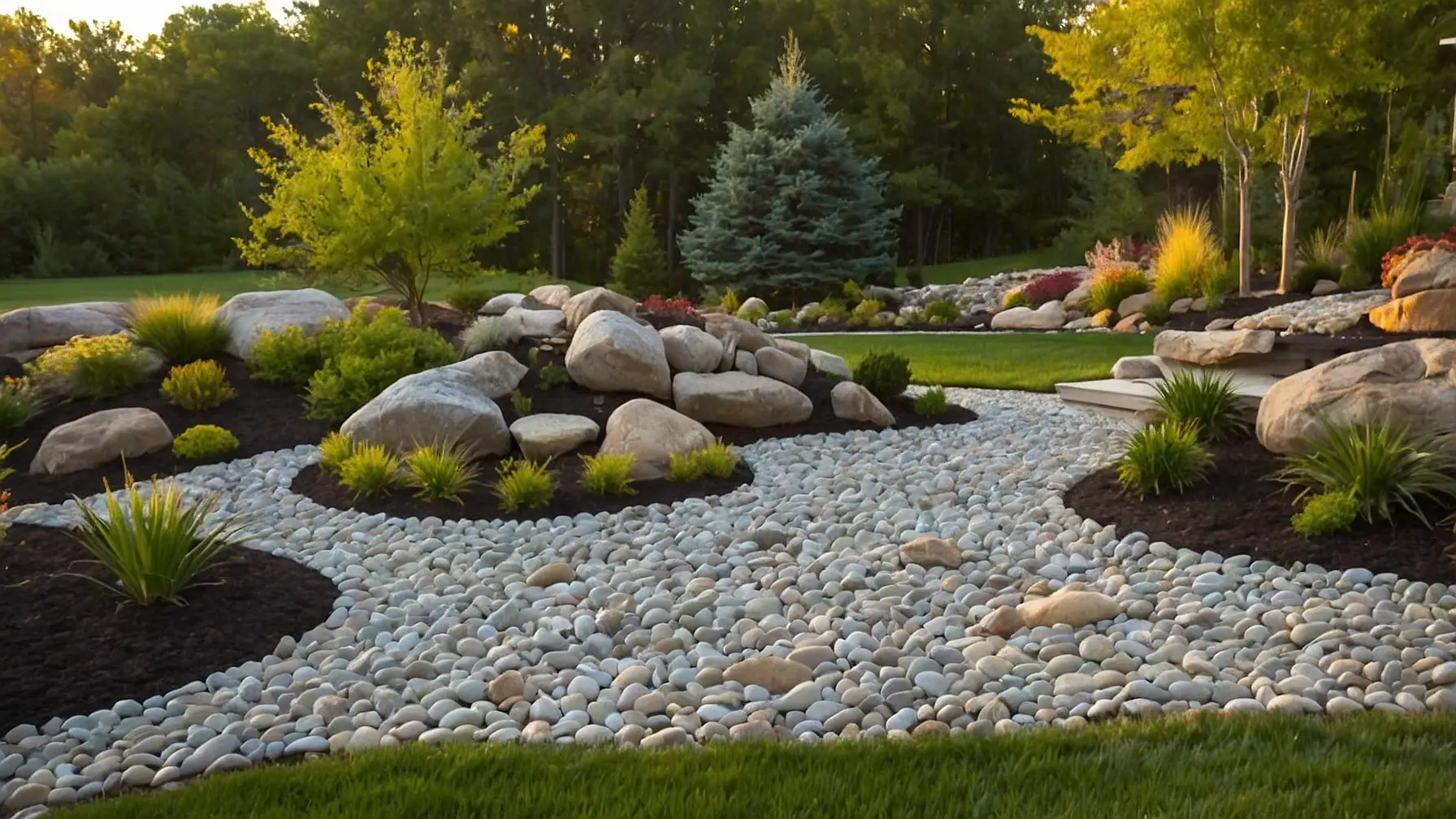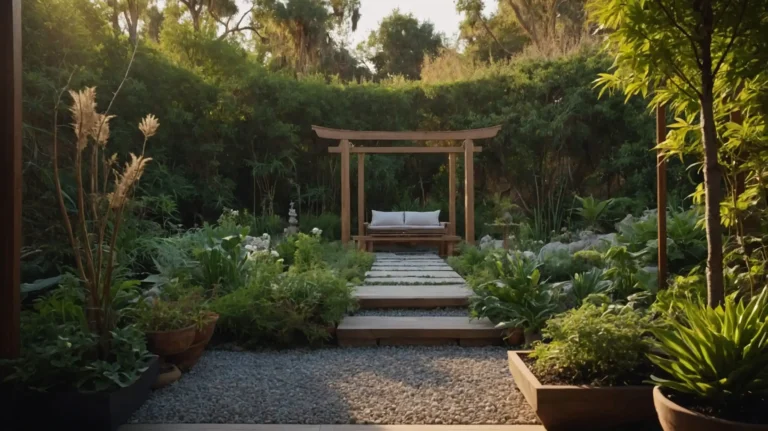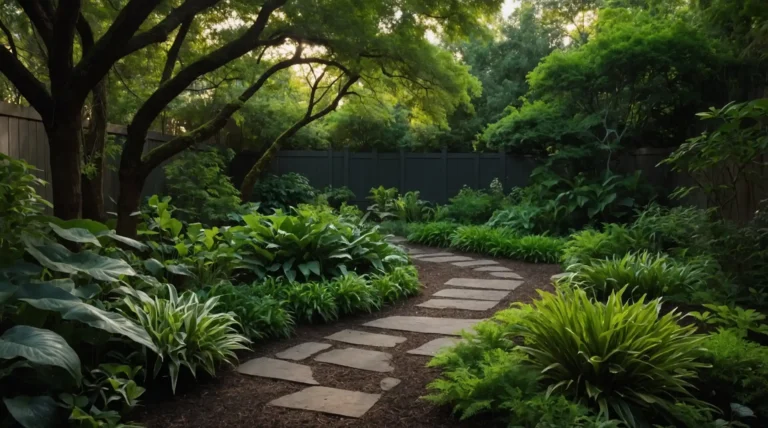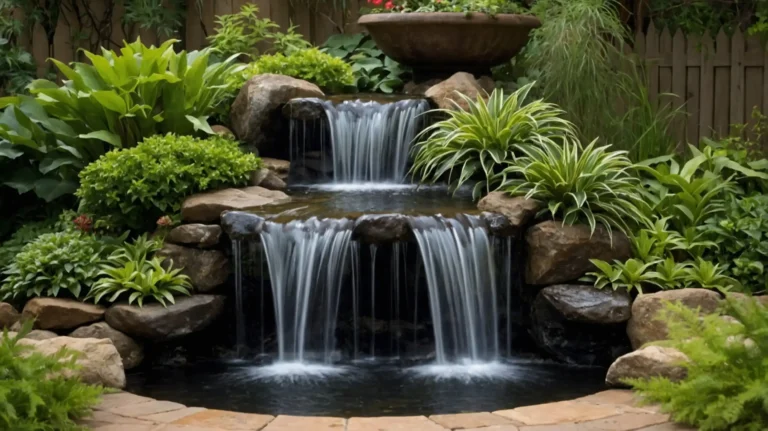10 River Rock Landscaping Ideas: Transform Your Outdoor
River rock landscaping can transform your backyard into a stunning natural oasis.
These smooth stones add texture, color, and visual interest to outdoor spaces.
They’re versatile and low-maintenance, making them perfect for various garden designs.
You can use river rocks in many creative ways to enhance your backyard’s beauty and functionality.
From simple borders to elaborate water features, river rocks offer endless possibilities.
They work well with plants, pathways, and other landscaping elements to create a cohesive look.
1: River Rock Pathway
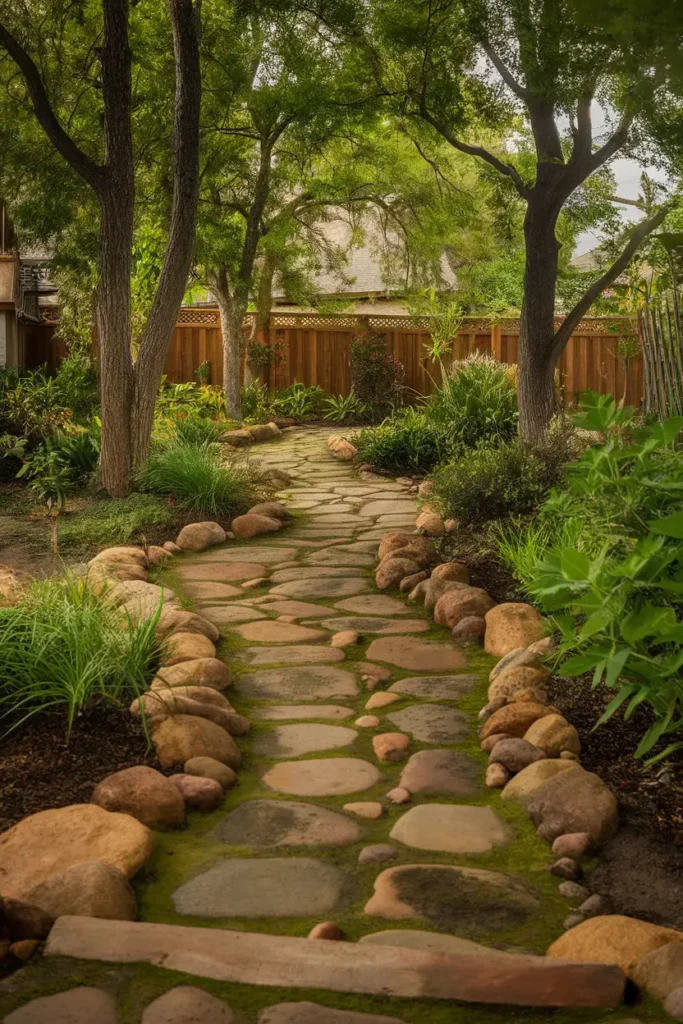
A river rock pathway can add charm to your backyard. You can create a winding path using smooth, rounded stones.
Choose various sizes and colors of river rocks for a natural look. Place larger stones along the edges to define the path.
This low-maintenance option is perfect for connecting different areas of your yard.
It’s also great for creating a relaxing walkway through your garden.
2: Zen Water Feature
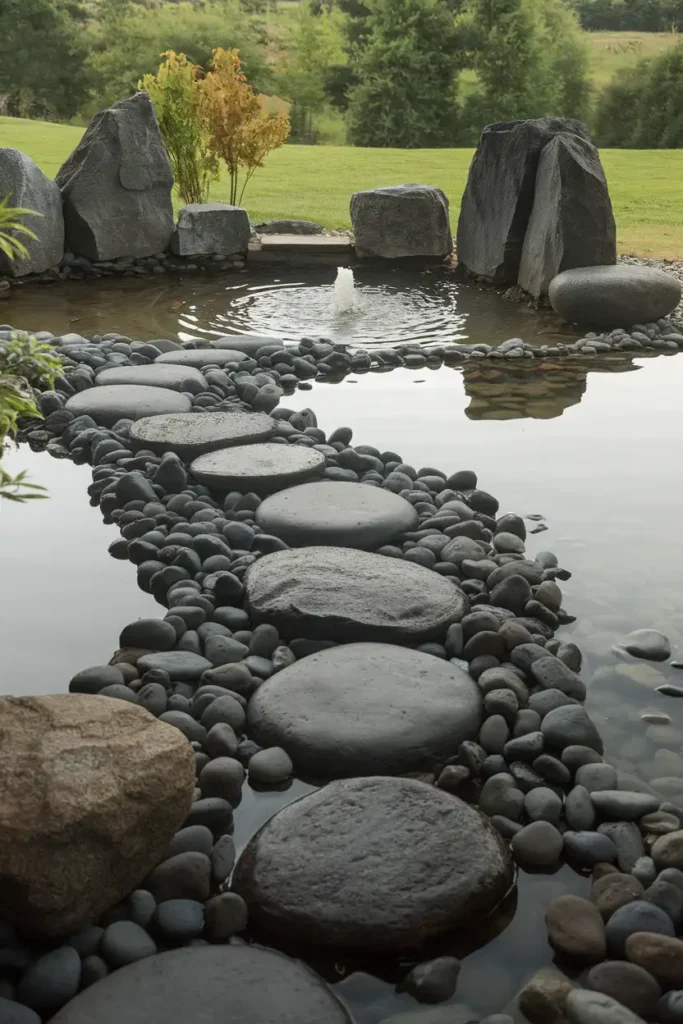
A river rock Zen water feature can bring peace to your backyard. Choose smooth, dark stones to frame a small pond or fountain.
The rocks will glisten when wet, creating a calming atmosphere.
Add some small pebbles around the water’s edge. You can also place a few larger rocks as focal points.
This simple design will help you relax and unwind in your outdoor space.
3: Rock Garden Bed

A rock garden bed adds texture and visual interest to your backyard.
You can create a raised bed using flat stones stacked in a circular or oval shape.
Fill it with soil and plant drought-tolerant plants like yucca or succulents.
This low-maintenance option works well in areas with poor soil.
The rocks retain heat, creating a microclimate for plants that thrive in warm, dry conditions.
4: Dry River Bed
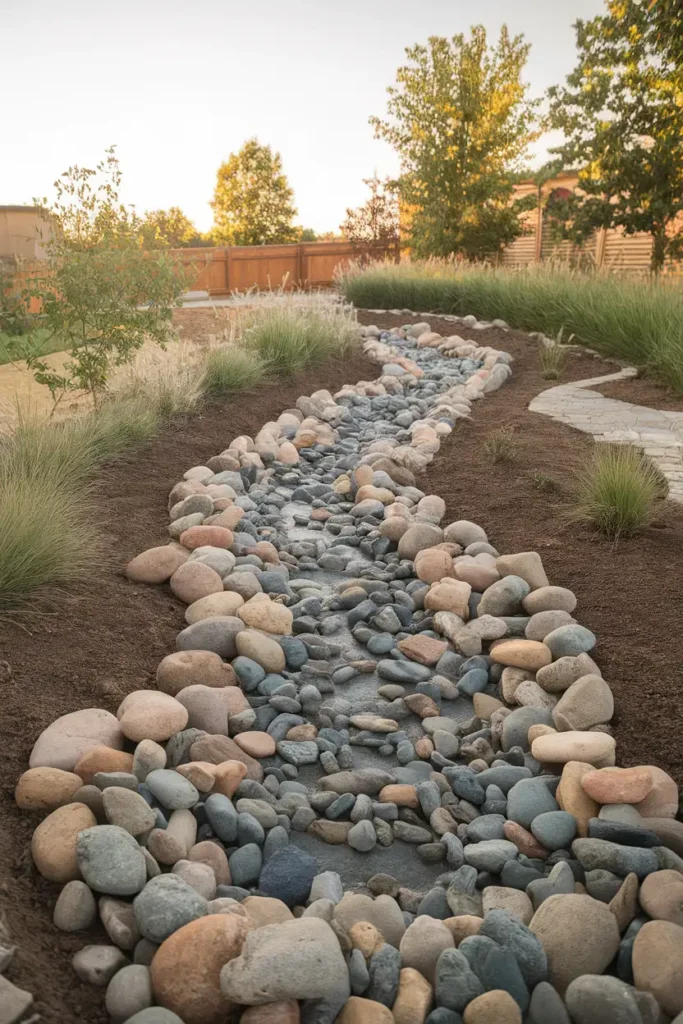
A dry river bed can add visual interest to your backyard.
You can create one by digging a shallow trench and filling it with rocks of various sizes.
Use larger rocks along the edges and smaller ones in the middle.
Add plants like grasses and shrubs around the edges for a natural look.
5: Fire Pit with River Rocks
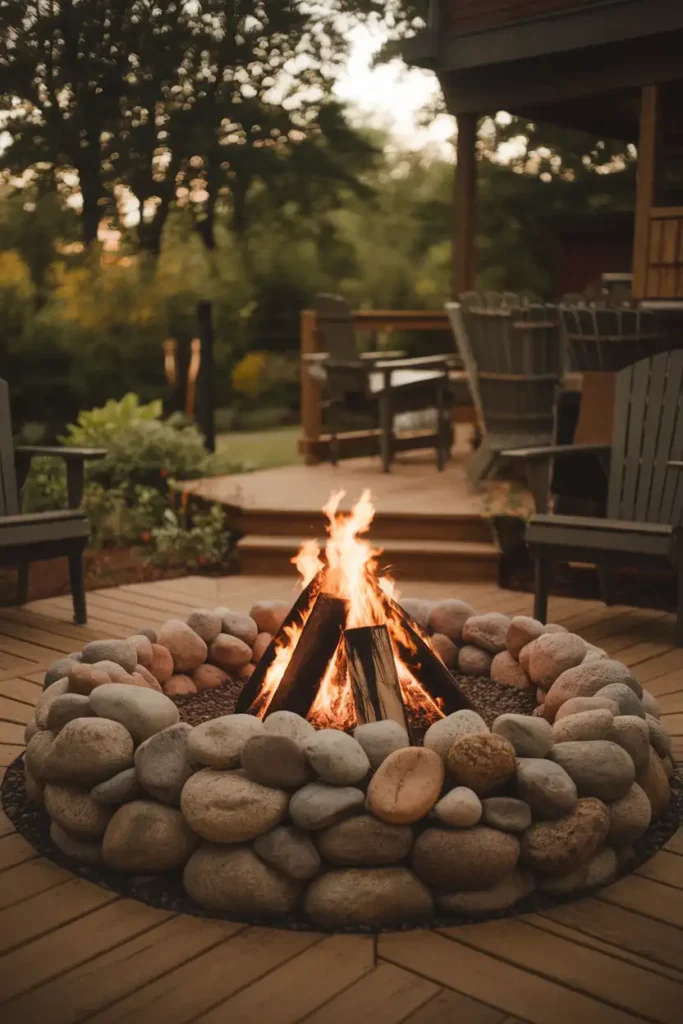
A river rock fire pit can transform your backyard. It creates a cozy spot for gatherings and adds natural beauty.
You can build one using river rocks of various sizes. Arrange them in a circle and add seating around it.
This design blends well with other landscaping elements. It’s a great way to bring warmth and style to your outdoor space.
6: River Rock Patio

A river rock patio can transform your backyard into a natural oasis.
Choose flat, smooth stones for a comfortable surface to walk on.
Prepare the ground by digging a shallow area and adding sand or gravel as a base. This creates stability for your patio.
Arrange the rocks in a pattern you like. Fill gaps with smaller stones for a polished look.
7: Rocky Retaining Wall

A rocky retaining wall adds structure to your backyard.
You can build it with river rocks to create a natural look. This wall helps prevent soil erosion on slopes.
Choose rocks of different sizes for visual interest. Stack them carefully to ensure stability.
Your rocky retaining wall will be both functional and attractive.
8: Pond with River Rocks
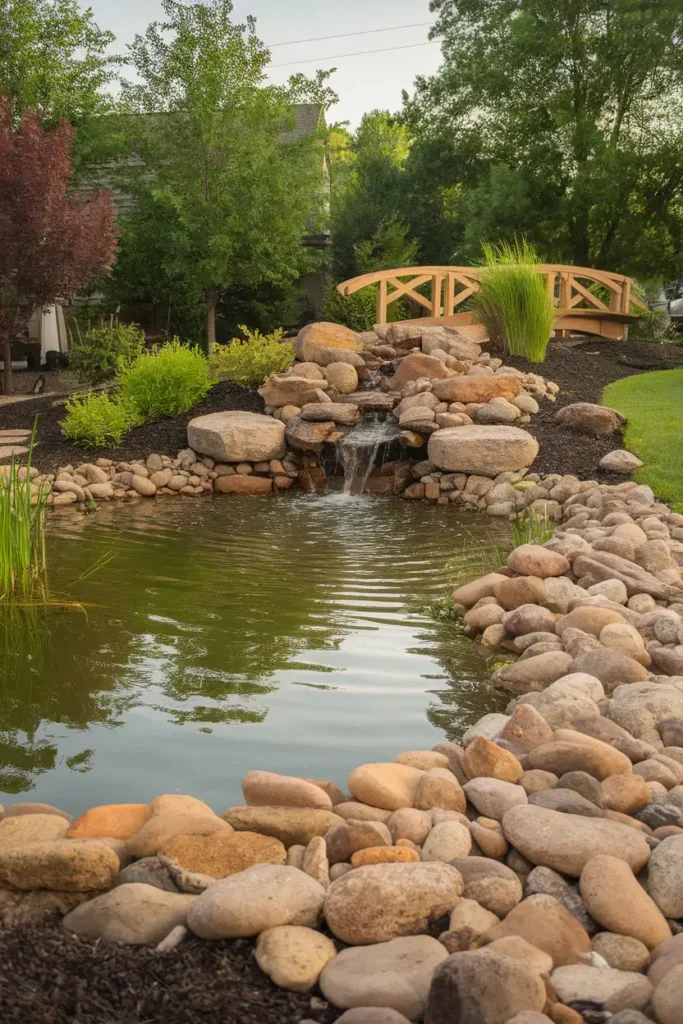
River rocks can turn a simple backyard pond into a natural oasis.
Line the edges of your pond with smooth, rounded stones in various sizes.
This creates a seamless transition between water and land.
Add larger rocks within the pond to create interest and places for wildlife to rest.
You can also use river rocks to build a small waterfall feature for added visual appeal and soothing sounds.
9: River Rock Border
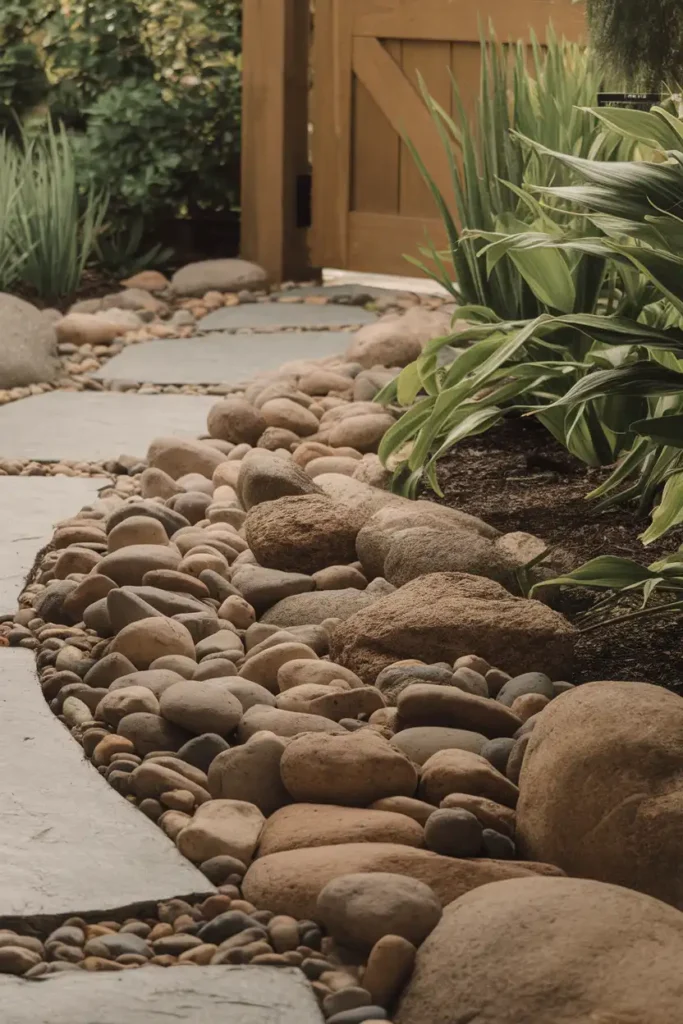
River rock borders add a natural, elegant touch to your backyard.
You can use them to separate garden areas or line pathways.
Choose rocks in various sizes for visual interest. Place them in a single row or stack them for a more pronounced effect.
10: Stepping Stone Path
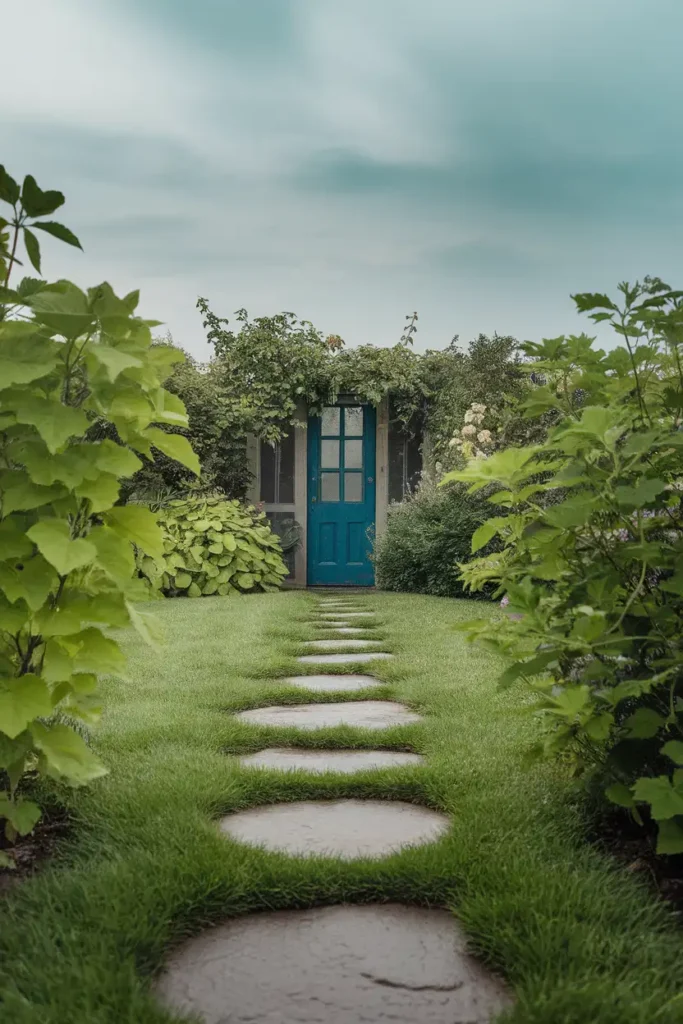
A stepping stone path adds charm to your backyard.
Use flat river rocks as stepping stones. Space them out in your lawn or garden.
This creates a natural-looking walkway that’s easy to follow.
Tips to Maintain Your Outdoor River Rock Landscaping
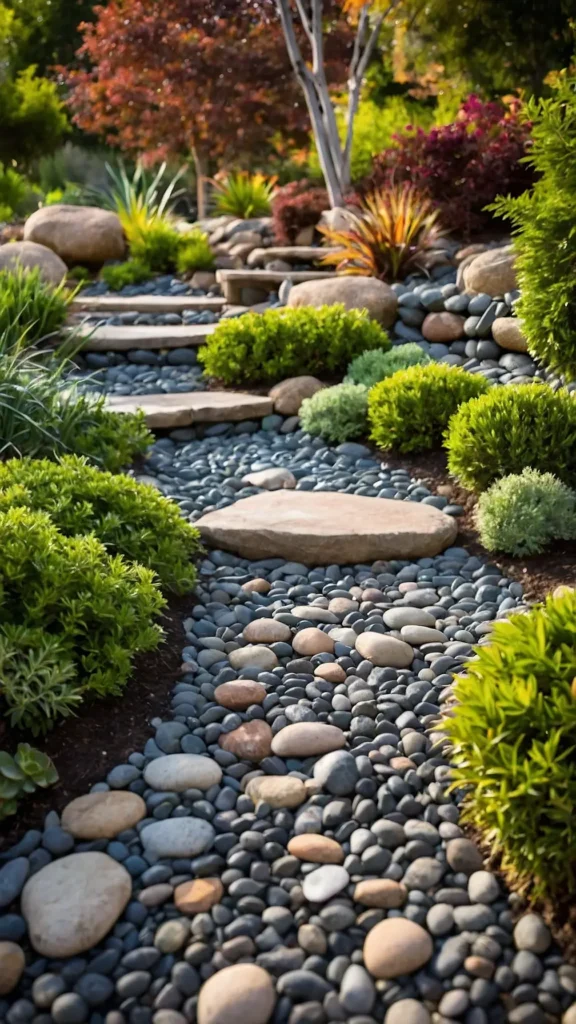
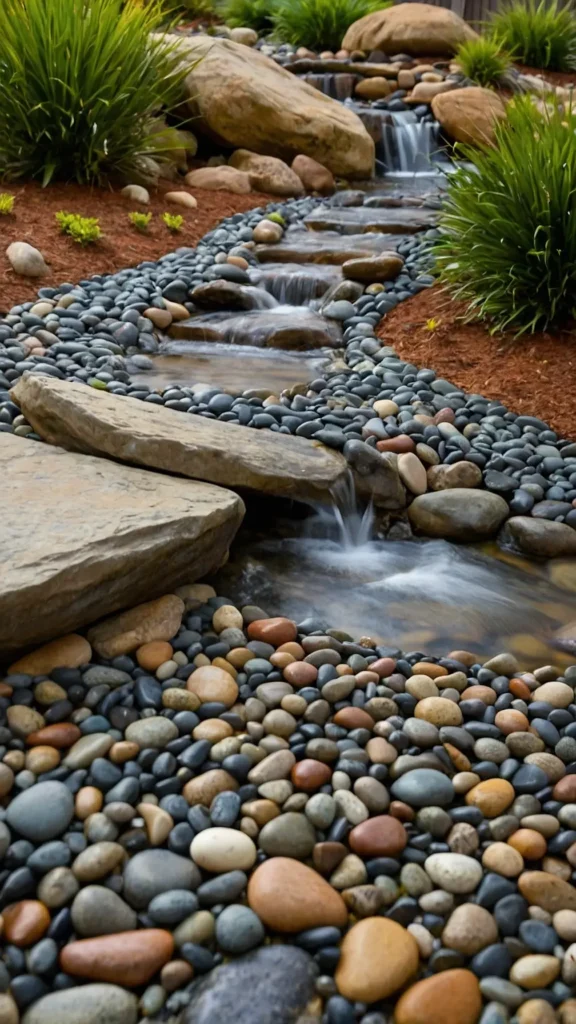
River rock landscaping can add a beautiful, natural element to your outdoor space while providing a low-maintenance alternative to traditional lawns or gardens.
However, to keep your river rock landscaping looking its best, it’s important to follow these maintenance tips.
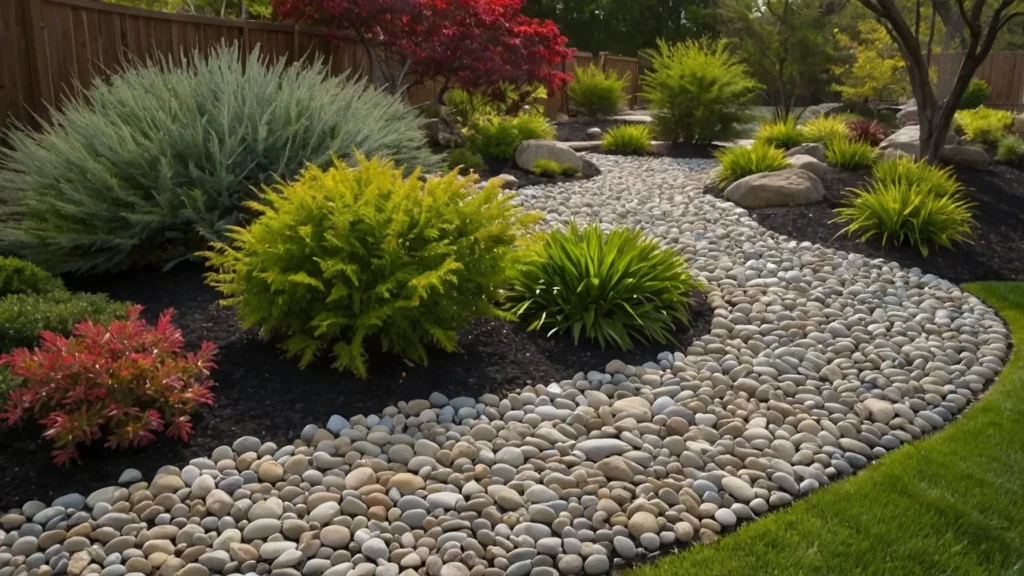
1. Weed Control
- Preventing Weed Growth:
- Landscape Fabric: Before installing river rocks, consider laying down a landscape fabric or weed barrier. This will help prevent weeds from growing up through the rocks and minimize the need for frequent weeding. Make sure to overlap the edges of the fabric and secure it with landscape staples.
- Pre-emergent Herbicides: Applying a pre-emergent herbicide in early spring can help prevent weed seeds from germinating. Be cautious when using herbicides near desired plants and always follow the manufacturer’s instructions.
- Removing Existing Weeds:
- Manual Removal: If weeds do appear, the most effective way to remove them is by pulling them out by hand. It’s best to do this after a rain when the soil is relatively soft, making it easier to remove the entire root system. For deep-rooted weeds, use a weeding tool to ensure complete removal.
- Spot-Treating with Herbicides: For stubborn weeds or large areas, spot-treating with a post-emergent herbicide can be an option. Be careful to avoid spraying nearby plants and follow the product’s instructions for application and safety precautions.
2. Cleaning and Refreshing the Rocks
- Removing Debris:
- Regular Raking: Use a rake or leaf blower to remove fallen leaves, twigs, and other debris that may accumulate on the river rocks. This helps maintain a clean and tidy appearance and prevents organic matter from decomposing and creating a breeding ground for weeds.
- Pressure Washing: For a deeper clean, consider pressure washing the river rocks every few years. This will remove dirt, stains, and algae growth, restoring the rocks’ original color and shine. Be cautious not to use excessive pressure, as it can dislodge the rocks or damage nearby plants.
- Cleaning Stubborn Stains:
- Natural Solutions: For mild stains or dirt, you can create a cleaning solution using equal parts water and vinegar. Apply the mixture to the rocks using a stiff brush, scrub gently, and rinse with water. This natural method is effective for general cleaning and is safe for plants.
- Commercial Cleaners: For tougher stains or algae growth, you may need to use a commercial cleaner specifically designed for outdoor surfaces. Follow the product’s instructions and take necessary precautions to protect nearby plants and surfaces.
3. Maintaining the Rocks’ Arrangement
- Leveling and Redistributing:
- Raking and Leveling: Over time, river rocks may shift or become uneven due to rain, wind, or foot traffic. Regularly rake the rocks to maintain a level and even distribution. Pay extra attention to areas around edging or borders, where rocks tend to spill over.
- Adding Fresh Rocks: If you notice bare spots or areas where the rocks have thinned out, add fresh river rocks to maintain a consistent coverage. Choose rocks that match the size and color of the existing ones for a seamless appearance.
- Edging and Borders:
- Maintaining Edging: If your river rock landscaping has a defined edge or border, regularly check and maintain it to prevent rocks from spilling into adjacent areas. Repair any damage to the edging material, such as plastic, metal, or concrete, to keep the rocks contained.
- Refreshing Borders: If the border of your river rock landscaping consists of larger stones or boulders, ensure they remain stable and in place. Adjust or replace any displaced border stones to maintain a neat and defined edge.
4. Seasonal Maintenance
- Spring Clean-up:
- Thorough Cleaning: In the spring, give your river rock landscaping a thorough cleaning to remove any accumulated debris, leaves, or dirt from the previous season. Use a rake, leaf blower, or pressure washer as needed to refresh the appearance of the rocks.
- Weed Prevention: Apply a pre-emergent herbicide in early spring to prevent weed seeds from germinating. This will save you time and effort in removing weeds throughout the growing season.
- Fall Preparation:
- Removing Fallen Leaves: In the fall, regularly remove fallen leaves and debris from your river rock landscaping to prevent them from decomposing and creating a fertile environment for weed growth. Use a rake or leaf blower to keep the rocks clean and visible.
- Winterizing: Before the winter season, ensure that your river rock landscaping is free of debris and weeds. If you live in an area with heavy snowfall, you may want to mark the edges of your river rock area with tall stakes to avoid accidentally damaging the landscaping during snow removal.

